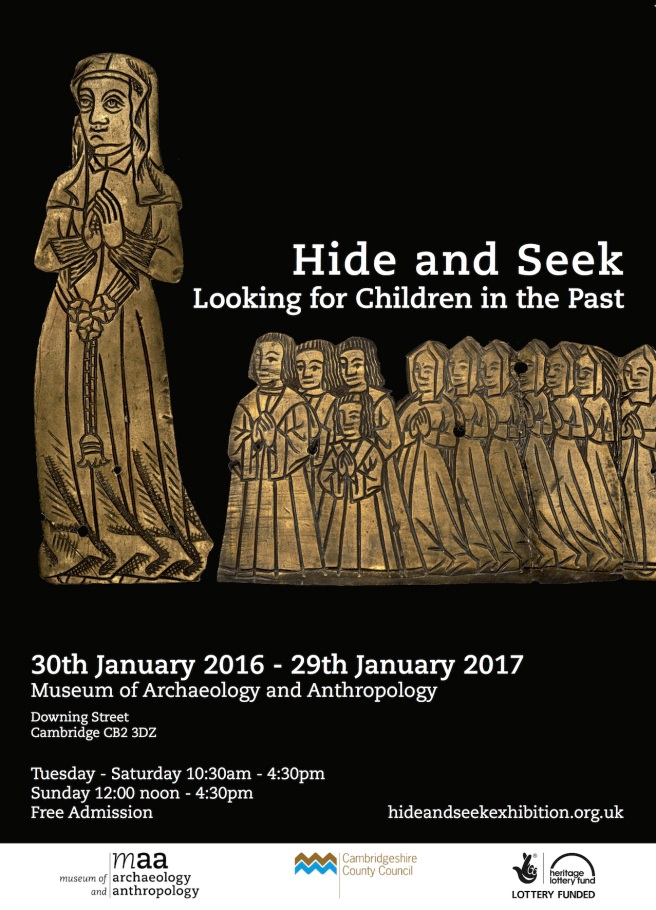As far as we know, the Hide and Seek exhibition at MAA is the first time a museum has had an exhibition dedicated to the archaeology of children. Visitors have been engaging well with the display, as we can tell from the evaluation that we have been doing. There are some fascinating comments in the visitors’ book, our exit interviews are showing us what is inspiring people and tracking is revealing the hot spots in the exhibition.
So it was with some excitement that Dr Jody Joy and I had the opportunity to present on the public reception of Hide and Seek at the 8th World Archaeological Congress (WAC8.org) in Japan in September.
There were two sessions at the conference on children in archaeology, covering a wide range of topics, such as juvenile tool use in wild chimpanzees, childhood identity in Egypt, the weapons found in the graves of Anglo Saxon young people and children’s fingerprints on Bronze Age ceramics. The paper that Jody and I gave on MAA’s exhibition and the evaluation seemed to be well received and it was good to be able to report on evaluation that was happening while the exhibition was still open (rather than as a summary).

It was incredible to be in Kyoto and attending the conference allowed me the opportunity to explore just a few of the museums and heritage sites of the area as well. A day trip to Hiroshima and the Peace Memorial Museum was unforgettably moving. The UNESCO World Heritage site of Tenryu-ji Temple remains a haven of calm and serenity. Nijo Castle included a museum containing many beautifully painted screens.
It was truly an inspirational trip and I would like to convey my sincere thanks to UCM for providing the funding to allow me to be at the congress.
Sarah-Jane Harknett, Outreach Organiser, MAA







 Close-up of the tiny gold studs from the Bronze Age dagger discovered near Stonehenge. Image © Wiltshire Museum, Devizes
Close-up of the tiny gold studs from the Bronze Age dagger discovered near Stonehenge. Image © Wiltshire Museum, Devizes






